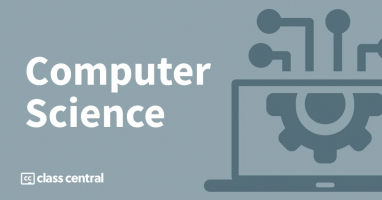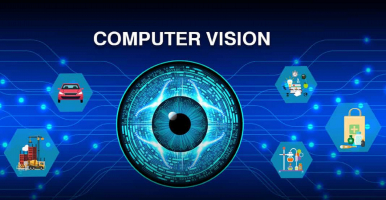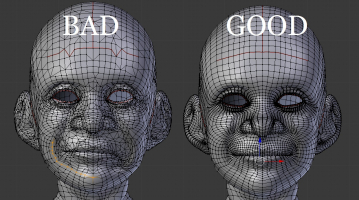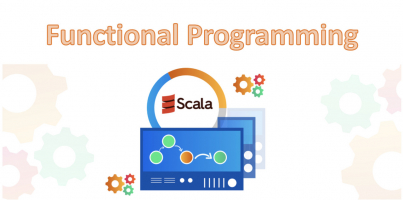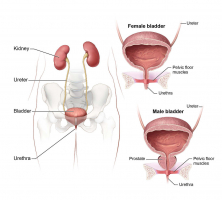Top 10 Best Books On Theoretical Computer Science
In spirit, theoretical computer science (TCS) is mathematical and abstract, yet it is motivated by practical and everyday computation. Its goal is to better ... read more...understand the nature of computation and, as a result, create more efficient approaches. TCS covers a vast range of topics and is difficult to grasp. So, the ten best books on theoretical computer science are recommended for you to explore knowledge easier.
-
Noson S. Yanofsky is a professor at Brooklyn College and The Graduate Center of the City University of New York's Department of Computer and Information Science. Dr. Mirco A. Mannucci is a holomath, or that particular breed of polymath who never stops trying to weave the tangled threads of his many interests into a cohesive whole, to use his neologism.
One of the best books on theoretical computer science is Quantum Computing for Computer Scientists. Quantum computing is a multidisciplinary field that aims to take advantage of some of quantum mechanics' strange properties to broaden our computational horizons. Readers will be taken on a tour of this intriguing field of cutting-edge research in Quantum Computing for Computer Scientists. This book employs ideas and techniques common to any student of computer science and is written in an approachable yet rigorous manner. The reader is not required to have a strong foundation in advanced mathematics or physics.
Following the presentation of the basic prerequisites, the content is organized to look at various elements of quantum computing from a computer science perspective. Computer architecture, algorithms, programming languages, theoretical computer science, cryptography, information theory, and hardware are among the topics covered. The text includes step-by-step examples, over 200 tasks with solutions, and programming drills to help computer science students and researchers understand quantum computing.
Some reviews about this book: “The title says it all. This book was great for non-physicists that want to understand Quantum Computing from a Computer Science frame of reference. Full disclosure, I have a degree in Physics and have been working as a programmer for the last 20 years.”
Authors: Noson S. Yanofsky & Dr. Mirco A. Mannucci
Link to buy: https://www.amazon.com/-/es/Noson-S-Yanofsky/dp/0521879965/ref=sr_1_1?
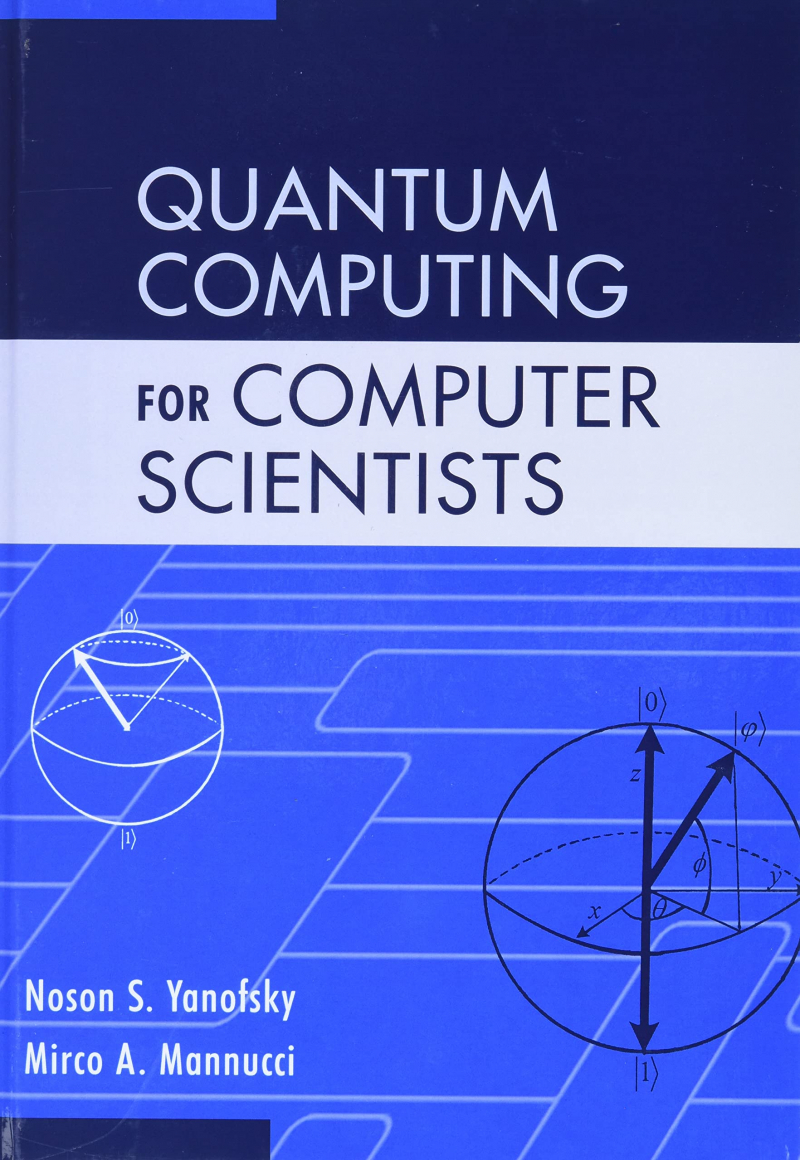
Photo: https://www.amazon.co.uk/ 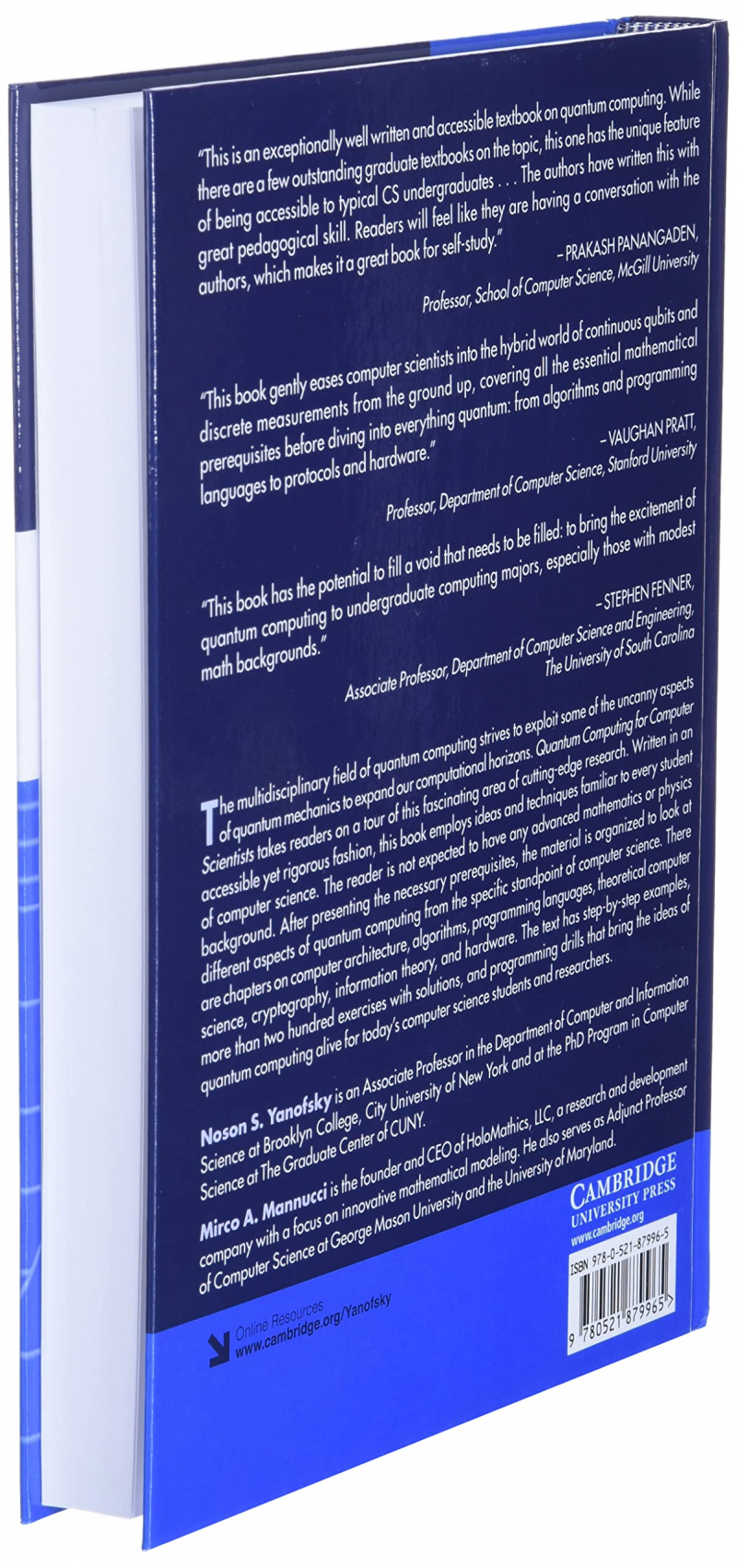
Photo: https://www.amazon.co.uk/ -
Cristopher Moore earned a B.A. in Mathematics, Physics, and Integrated Science from Northwestern University with honors in 1986, when he was 18 years old. He has produced over 90 publications on issues spanning from undecidability in dynamical systems to quantum computing, phase transitions in NP-complete problems, and network analysis.
Stephan Mertens graduated from Georg-August University Gttingen with a diploma in physics in 1989 and a Ph.D. in physics in 1991. He worked in the software sector for three years after receiving his Ph.D. before joining the Otto-von-Guericke University Magdeburg faculty as a theoretical physicist. In statistical mechanics, his research focuses on disordered systems, average-case complexity of algorithms, and parallel computing.
Computational complexity is one of the most beautiful disciplines of modern mathematics, and it's becoming more and more relevant to other sciences like physics and biology. However, this beauty is frequently buried beneath layers of superfluous formalism, and exciting new achievements such as interactive proofs, cryptography, and quantum computing are often deemed too "difficult" to demonstrate to the average student. The goal of this book is to bridge both gaps by explaining theoretical computer science's complex ideas in a clear and fun manner, making them accessible to non-computer scientists as well as computer scientists who want to finally comprehend what their formalisms are saying them.
Starting with P and NP-completeness, The Nature of Computation provides a clear and entertaining treatment of the discipline. The authors explain why the P vs. NP debate is so important and difficult to resolve. They then take the reader through mazes and games, optimization in theory and practice, randomized algorithms, interactive proofs, and pseudo randomness, Markov chains and phase transitions, and quantum computing's furthest reaches.
Some reviews about this book: "A treasure trove of ideas, concepts, and information on algorithms and complexity theory. Serious material presented most delightfully!"; "A creative, insightful, and accessible introduction to the theory of computing, written with a keen eye toward the frontiers of the field and a vivid enthusiasm for the subject matter."
Authors: Cristopher Moore & Stephan Mertens
Link to buy: https://www.amazon.com/-/es/Cristopher-Moore/dp/0199233217/ref=sr_1_1?
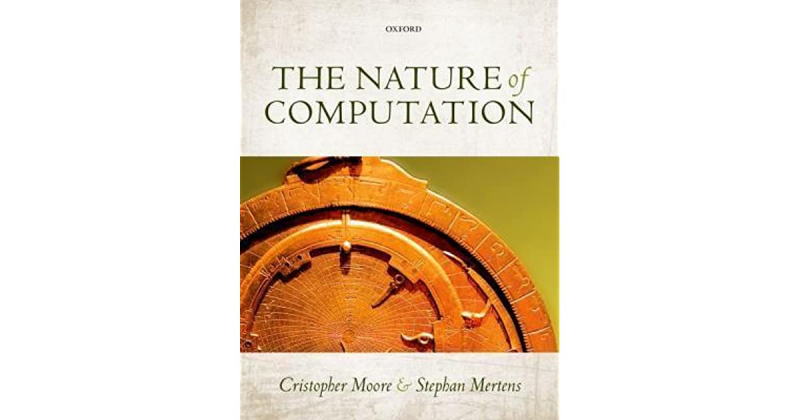
Photo: https://www.goodreads.com/ 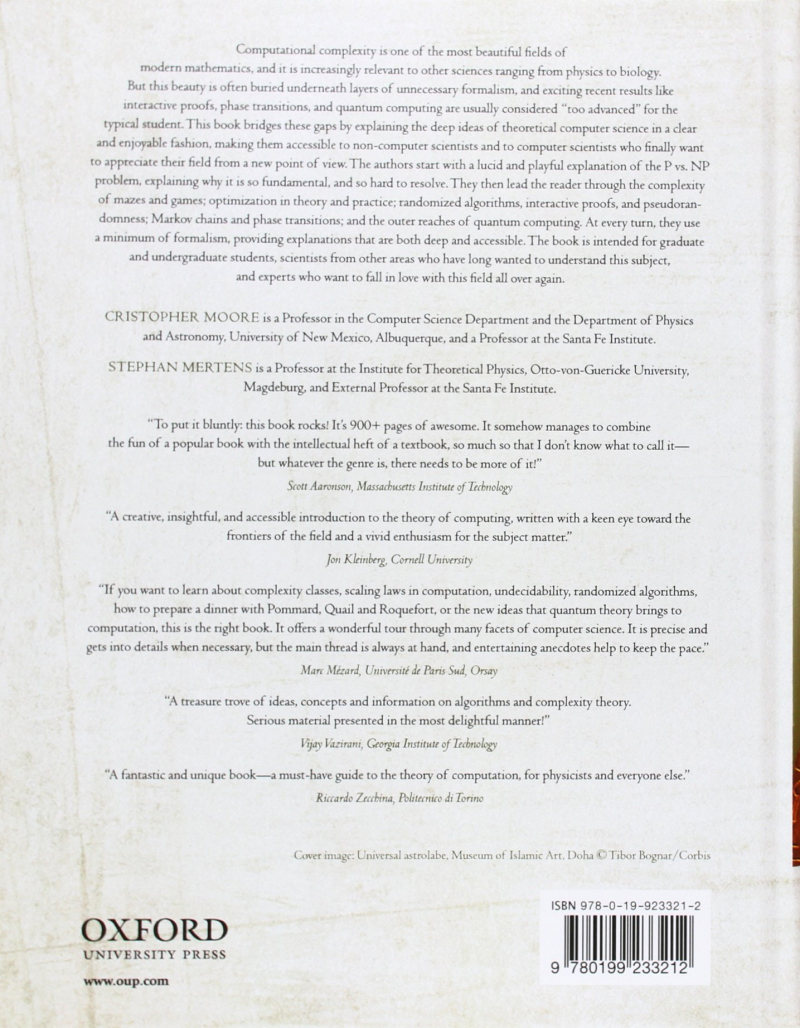
Photo: https://www.amazon.in/ -
Ronald Linn Rivest is an MIT Institute Professor and cryptographer. Professor of Computer Science and Engineering at the Massachusetts Institute of Technology. Charles E. Leiserson Thomas H. Cormen is an Emeritus Professor of Computer Science at Dartmouth College and the former Director of the Dartmouth College Institute for Writing and Rhetoric. Clifford Seth Stein is a professor of industrial engineering and operations research at Columbia University in New York, NY, where he also maintains a position in the Department of Computer Science. Introduction to Algorithms, co-authored by T. Cormen, C. Leiserson, and R. Rivest, is the best-selling algorithm textbook and has been translated into eight languages. This book receives about 39,500 of Stein's 46,000 citations.
Some algorithms books are thorough but incomplete, while others cover a lot of ground but lack rigor. Introduction to Algorithms is the only book that combines rigor with breadth. The book delves into a wide range of algorithms in depth while making their design and analysis accessible to readers of all skill levels. Each chapter is self-contained and can be utilized as a study unit on its own. The algorithms are given in English and pseudocode that anyone who has done some programming may understand. Without losing the depth of coverage or mathematical rigor, the explanations have been kept simple.
The first edition became a standard reference for professionals as well as a frequently utilized work in institutions around the world. New chapters on the role of algorithms, probabilistic analysis, randomized algorithms, and linear programming were included in the second edition. The third edition has been thoroughly edited and updated. It features two whole new chapters on van Emde Boas trees and multithreaded algorithms, as well as significant updates to the recurrence chapter (now dubbed "Divide-and-Conquer") and a matrices appendix. The content on flow networks includes an updated treatment of dynamic programming and greedy algorithms, as well as a new notion of edge-based flow. For this edition, many new exercises and problems have been introduced. The international paperback edition has been discontinued; however, the hardcover edition is still accessible globally.
Some reviews about this book: “This is the definitive textbook on algorithms and something no Computer Science student or researcher should ever be without. That said, the approach, whilst detailed, is at times quite dry and heavy going, and could perhaps be broken up a little more to keep the reader refreshed and focused.”
Authors: Thomas H. Cormen, Charles E. Leiserson, Ronald L. Rivest, Clifford Stein.
Link to buy: https://www.amazon.com/-/es/Thomas-H-Cormen/dp/0262033844/ref=sr_1_1?
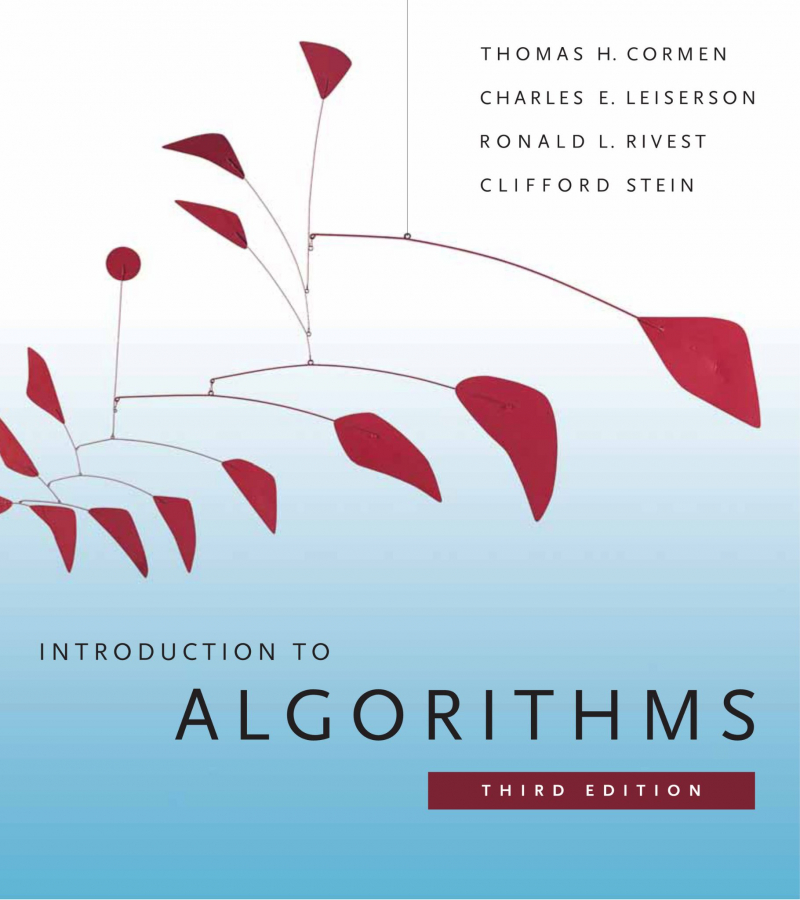
Photo: https://sachtienganhhanoi.com/ 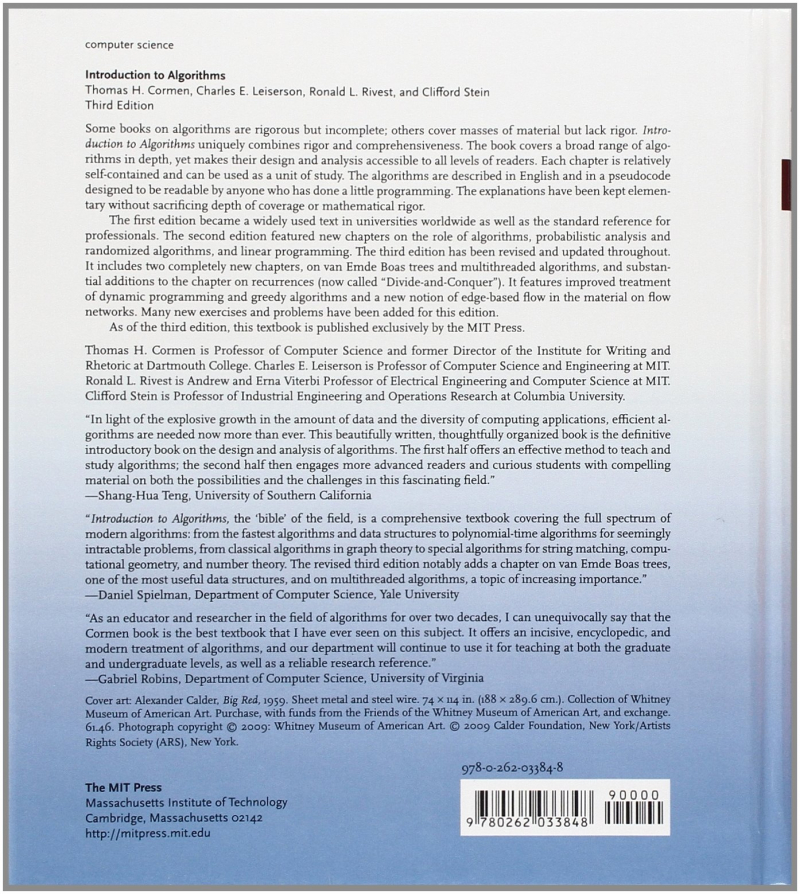
Photo: https://fado.vn/ -
When it comes to writing this book, Michael Sipser's idea is simple: make the subject engaging and relevant, and students will learn. His emphasis on integrating computer science theory rather than providing a collection of low-level information, as well as his intuitive explanations, distinguishes the book. Sipser, a well-known expert on the theory of computation, improves students' knowledge of computer science's conceptual tools, the aesthetic sense they need to create elegant systems, and the ability to think through problems on their own throughout the book.
Theorems and proofs underpin a mathematical exposition of computation theory in Introduction to the Theory of Computation. Proofs have a "proof idea" component that reveals the formalism's underlying principles. Prose rather than pseudocode is used to present algorithms to focus emphasis on the algorithms themselves rather than specific computational models. Topic coverage, vocabulary, and presentation order are all standards for an upper-level computer science theoretical course. Chapter 8 on space complexity, Chapter 9 on proved intractability, and Chapter 10 on advanced subjects, including approximation algorithms, alternation, interactive proof systems, cryptography, and parallel computing, will be of interest to users of the Preliminary Edition (now out of print).
Some reviews about this book: “This text provides a gentle introduction of this theory covering all three aspects: automata, complexity, and computability. This book does not include the long and tedious mathematical proofs of its assertions that might be found in the similar text.”
Author: Michael Sipser
Link to buy: https://www.amazon.com/-/es/Michael-Sipser/dp/053494728X/ref=sr_1_2?
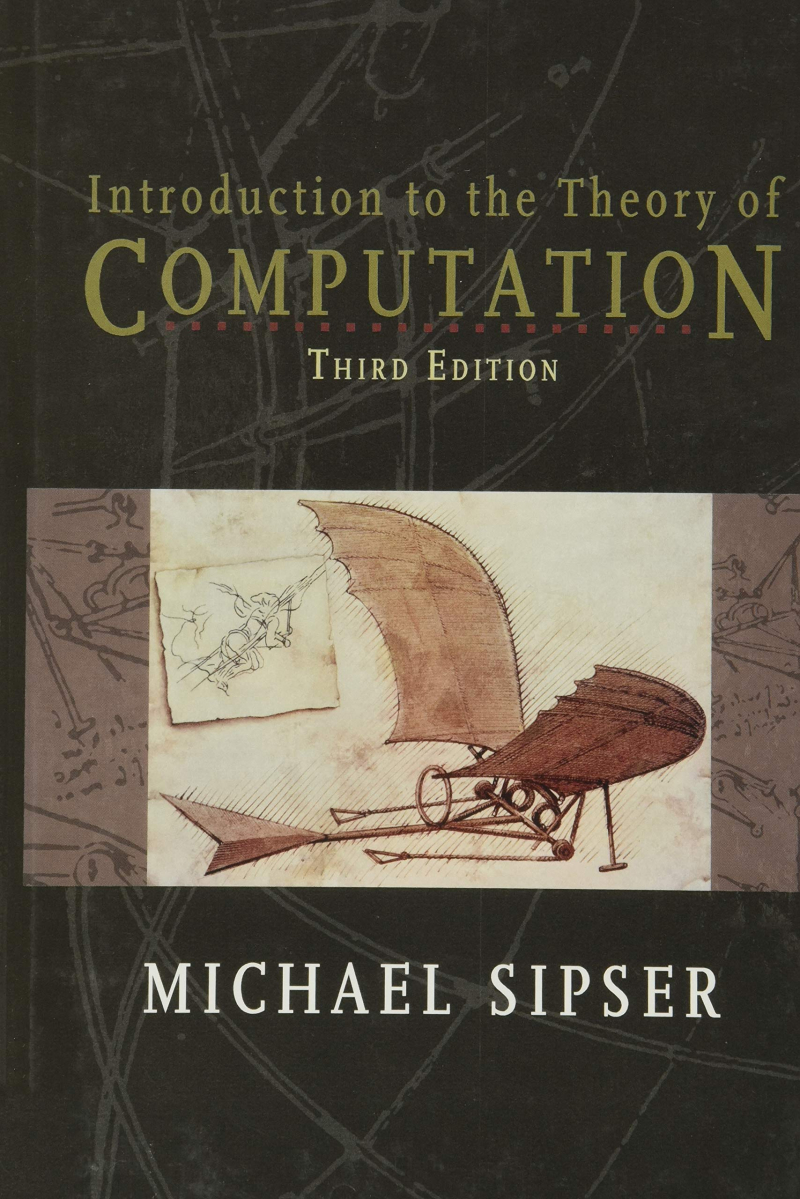
Photo: https://www.nitraipurmcanotes.great-site.net/ 
Photo: https://news.mit.edu/ -
Wan Fokkink is a Full Professor of Model-Based System Engineering at the University of Amsterdam. Supervisory control synthesis, distributed algorithms, safety-critical software, protocol verification, and process algebra are among his expertise. Wan's research focuses on the analysis and design of distributed systems in general, which includes everything from automatically synthesizing control software to formal verification of communication protocols and executable biological system models.
Manipulation of so-called labeled transition systems using automated and semi-automatic methods has become a significant tool for finding weaknesses in software and hardware systems. Process algebra was created to express such labeled transition systems algebraically, allowing for more manipulation options using equational logic and term rewriting.
Over the last two decades, the theory of process algebra has advanced fast, and verification tools based on process algebra have been developed, frequently in conjunction with approaches related to model checking. Introduction to Process Algebra (Texts in Theoretical Computer Science. An EATCS Series) provides a thorough overview of the fundamentals of process algebra and its applications.
Some reviews about this book: “This is a delightful new presentation of Process Algebra, which was much needed since the classic text by Baeten and Weijland is getting outdated. In comparison, I find Fokkink's text easier to digest, more precise, and goes significantly further. Indeed, it should be for a theory that has evolved rapidly in the last decade.”
Author: Wan Fokkink
Link to buy: https://www.amazon.com/-/es/Wan-Fokkink-ebook/dp/B001CXAHP2/ref=sr_1_1?
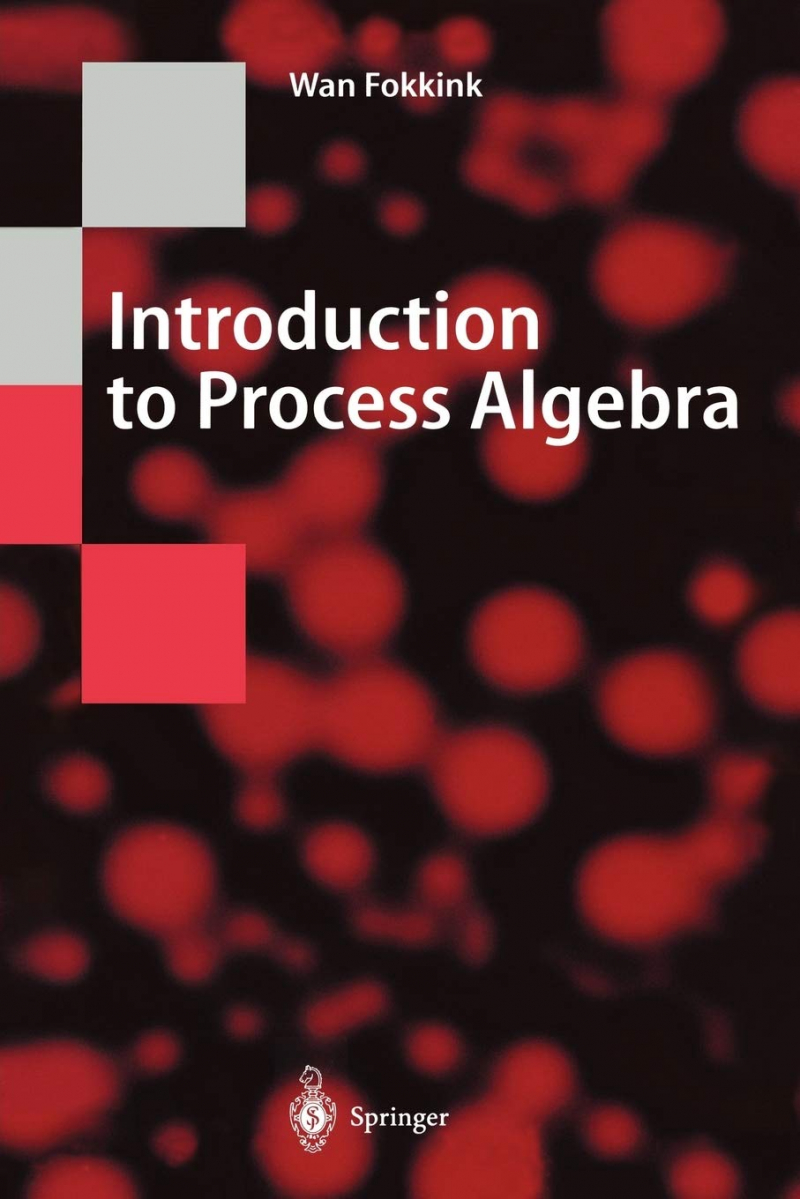
Photo: https://www.amazon.com/ 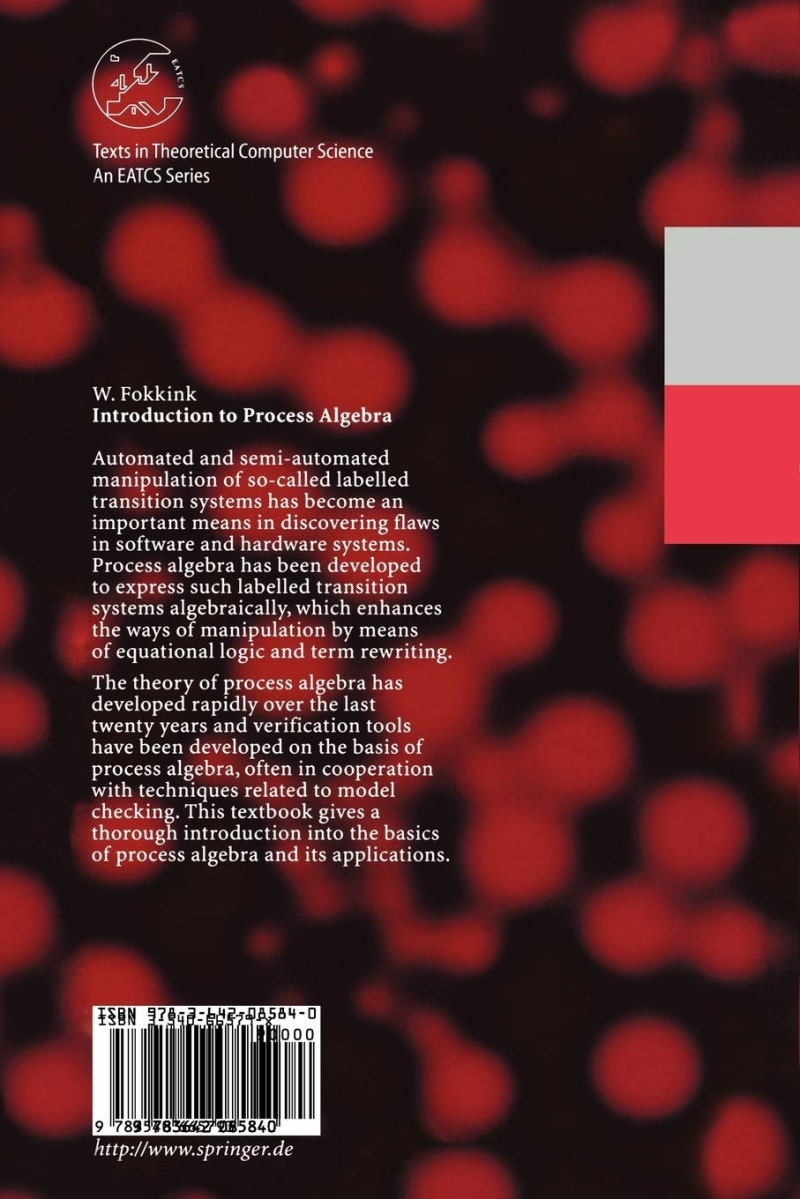
Photo: https://www.amazon.fr/ -
"A Programming Approach to Computability" was written by A.J. Kfoury, Robert N. Moll, and Michael A. Arbib. They base their approach to computability on the language of while-programs, a slimmed-down version of PASCAL, and save examination of classic models like Turing machines, string-rewriting systems, and p. -recursive functions for the last chapter, which is dedicated to correcting the theory.
Theoretical computer science is centered on computability theory. However, many of its fundamental principles were found by mathematical logicians before the development of the first stored-program computer, which is ironic. As a result, many texts on computability theory seem far removed from the problems of today's computer science students. A Programming Approach to Computability is considered one of the best books on theoretical computer science.
Computer science aims to offer a scientific foundation for the study of information processing, algorithmic problem solving, and computer architecture and programming. Over the last 40 years, advances in science, microelectronics, and programming methodology have allowed enormous programs to be designed with increasing speed and reduced error, as well as the development of mathematical techniques to allow the rigorous specification of program, process, and machine.
Authors: A.J. Kfoury, Robert N. Moll, Michael A. Arbib
Link to buy: https://www.amazon.com/-/es/J-Kfoury/dp/0387907432/ref=sr_1_1?
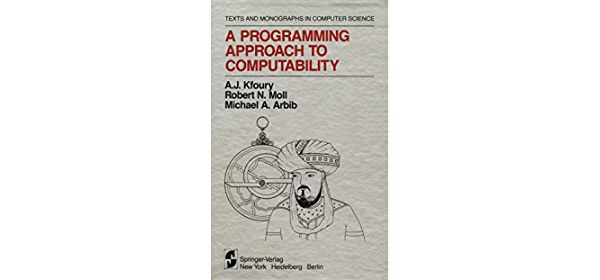
Photo: https://www.amazon.com/ 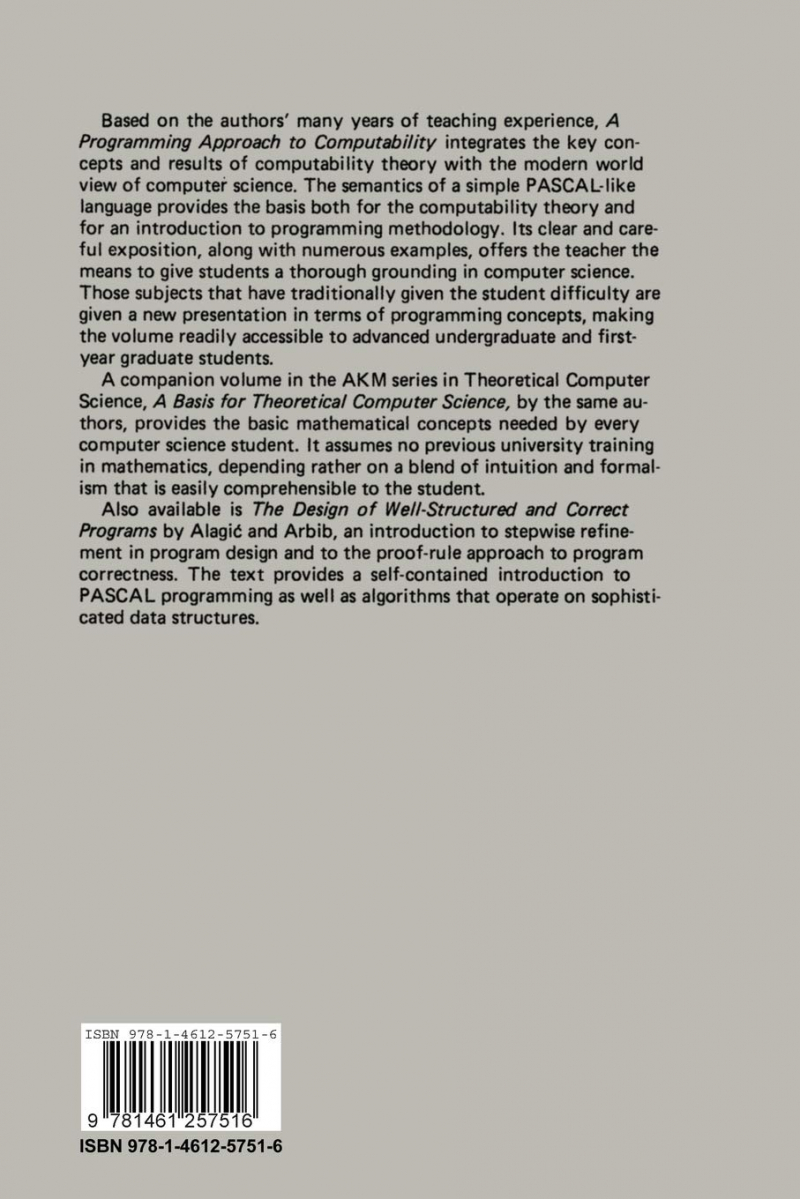
Photo: https://www.amazon.com/ -
Willem-Paul de Roever is a University of Kiel academic researcher who has co-authored 17 articles with a total of 529 citations. The index of the author is 8. The author has conducted extensive research in the areas of Java annotation and Real-Time Java.
Kai Engelhardt is a University of New South Wales academic researcher who has co-authored 29 papers with a total of 2346 citations. The index of the author is 12. Kai Engelhardt has previously worked for the University of Kiel and NICTA. Refinement calculus and correctness are two issues on which the author has done extensive research.
The purpose of Data Refinement: Model-Oriented Proof Methods and their Comparison is to give a thorough and systematic overview of the significant and widely used method of data refinement, as well as the simulation methods used to demonstrate its accuracy. In the first section, the authors focus on the general principles required to verify data refinement is right. They begin by explaining the underlying concepts and demonstrating that data refinement proofs can be reduced to proving simulation. Hoare Logic and the Refinement Calculus are discussed, as well as a broad theory of simulations that are constructed and related to both. To guide newcomers to the area, accessibility and comprehension are emphasized.
The second section of the book offers a thorough examination of key methods in this subject, including VDM, as well as methods by Abadi & Lamport, Hehner, Lynch, and Reynolds, Back's refinement calculus, and Z. All of these procedures are thoroughly examined and proven to be either incomplete, with counterexamples to their use, or always applicable when data refinement is present. This is demonstrated by demonstrating for the first time that all of these methods can be described and analyzed using only two concepts: forward and backward simulation. The book is self-contained, carrying the reader from the advanced undergraduate level to the state of the art in simulation methodologies.
Some reviews about this book: “By far the most authoritative book on refinement. Can pretty much ignore the "data" part in the title - it covers all forms of refinement for model-based formalisms. Very clear and rigorous writing.”
Authors: Willem-Paul de Roever & Kai Engelhardt
Link to buy: https://www.amazon.com/-/es/Willem-Paul-Roever/dp/0521103509/ref=sr_1_1?
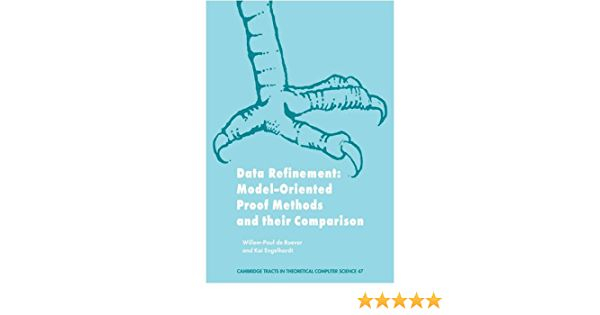
Photo: https://www.amazon.com/ 
Photo: https://www.actian.com/ -
Professor Daniel J. Velleman teaches mathematics and statistics. He has done a lot of work in the subject of mathematical logic, especially set theory. He has, nevertheless, written work on a variety of topics, including combinatorics, probability, topology, analysis, mathematics philosophy, and quantum mechanics foundations.
Although proofs are important in advanced mathematics and theoretical computer science, many students struggle the first time they take a course that includes them. The third edition of this best-selling text teaches students how to shift from solving problems to proving theorems by teaching them how to read and write proofs. This new edition exposes students to the world of advanced mathematics through the mastering of proofs, with over 150 new tasks and a new chapter on number theory.
To familiarize students with the language of mathematics and how it is interpreted, the book begins with basic ideas of logic and set theory. These ideas serve as the foundation for an examination of approaches for gradually constructing sophisticated proofs, with detailed scratch work' parts exposing the mechanism of proofs regarding numbers, sets, relations, and functions. How to Prove It: A Structured Approach will be valuable to everyone interested in logic and proofs, including computer scientists, philosophers, linguists, and, of course, mathematicians, as it assumes no prior knowledge beyond normal high school arithmetic.
Some reviews about this book: “This book is my go-to resource for students struggling with how to write mathematical proofs. Beyond its plentiful examples, Velleman lays out the techniques and principles so often glossed over in other texts.”
Author: Daniel J. Velleman
Link to buy: https://www.amazon.com/-/es/Daniel-J-Velleman/dp/1108439535/ref=sr_1_1?
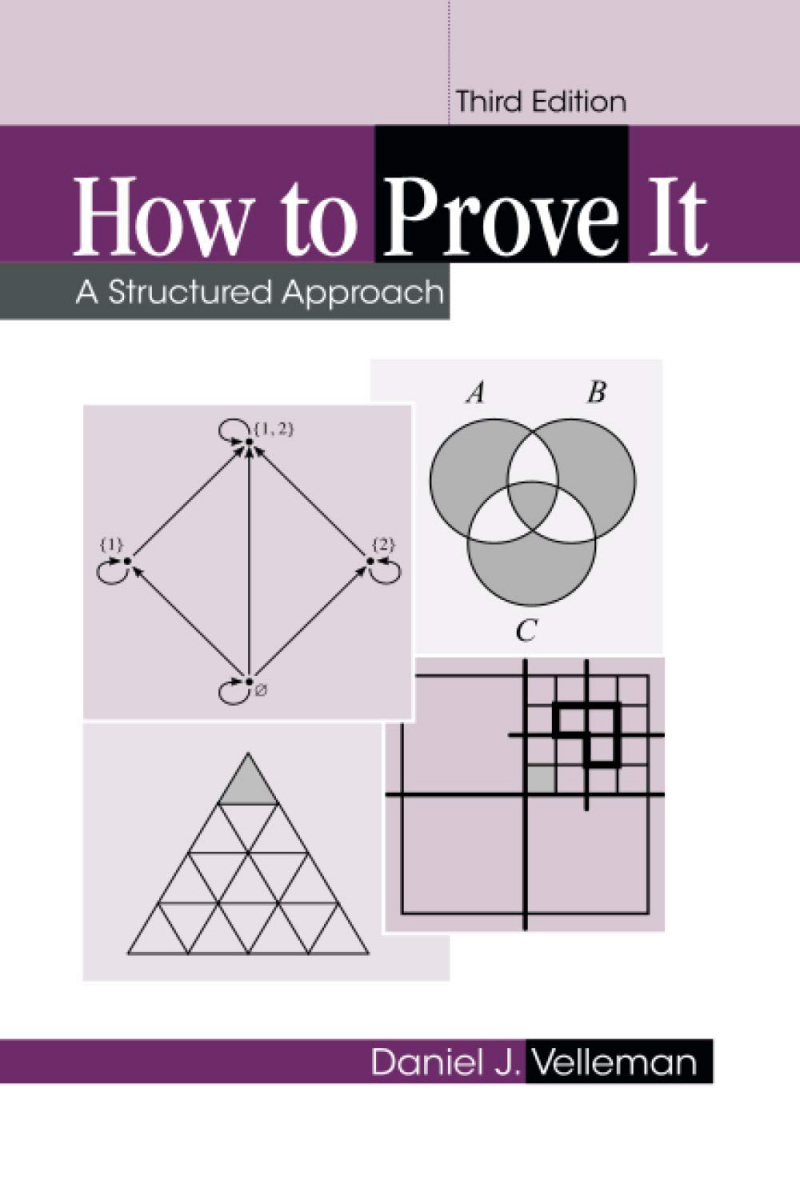
Photo: https://www.amazon.com.mx/ 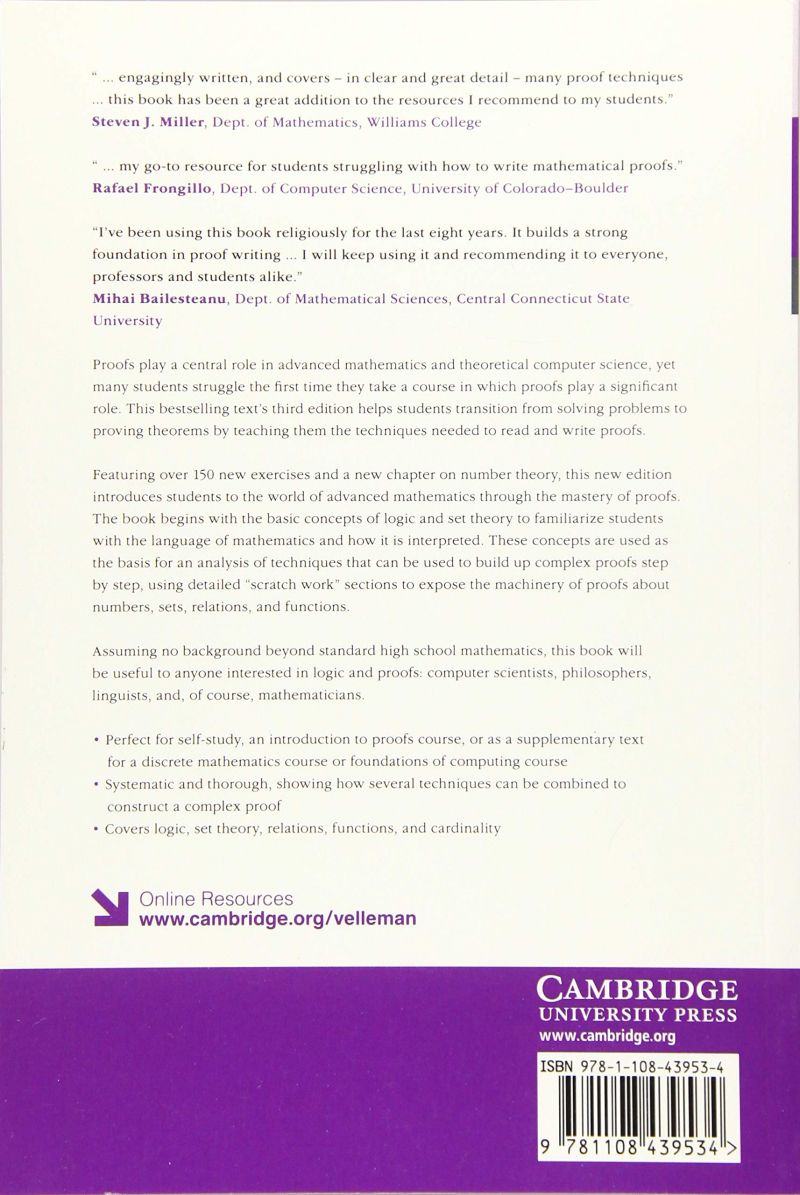
Photo: https://www.amazon.com.mx/ -
Udi Wieder worked for VMware Research as a senior staff researcher. He is mostly interested in statistical data analysis algorithms. In recent years, he has concentrated on anomaly detection and classification fairness. Data Structures, Randomized Algorithms, Scheduling, and Load Balancing are always on his mind.
Hashing, Load Balancing, and Multiple Choice introduce some of the fundamental algorithmic concepts that support many of the practical and theoretically interesting solutions to this problem. It focuses on multiple-choice systems in which objects are placed into buckets using several distinct hash functions, with the least loaded bucket being selected at the moment of placement. It examines the resulting distributions and demonstrates how these concepts could be applied to the creation of basic data structures. It concentrates on dictionaries in terms of data structures, including linear probing, cuckoo hashing, and many of their variants.
Some reviews about this book: 'Load Balancing' is a generic name given to a variety of algorithmic problems where a set of items need to be partitioned across buckets so that a load of each bucket is approximately evenly distributed. This book presents some of the basic algorithmic ideas that underpin many of the interesting approaches to this problem.
Author: Udi Wieder
Link to buy: https://www.amazon.com/-/es/Udi-Wieder/dp/1680832824/ref=sr_1_1?
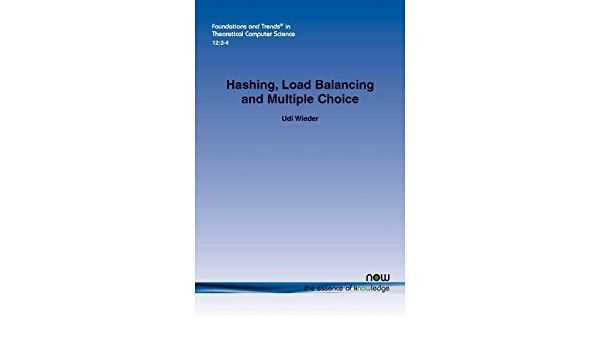
Photo: https://www.amazon.com/ 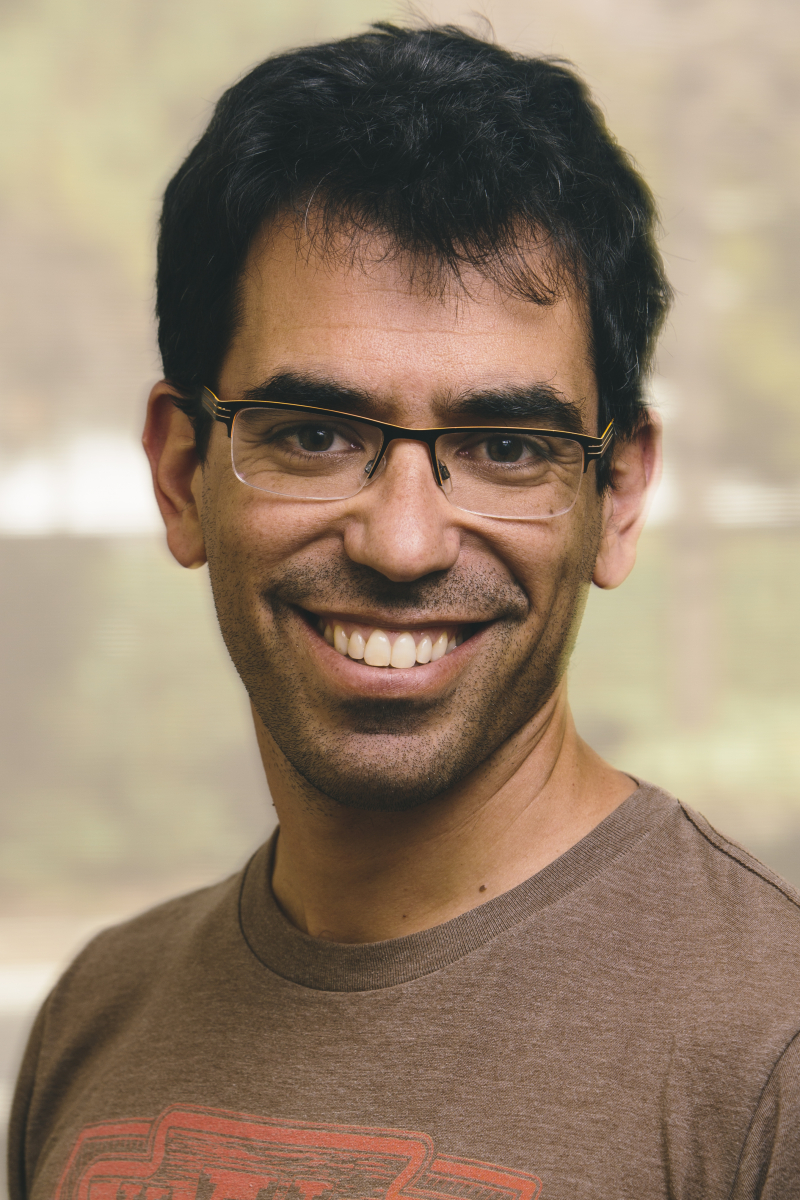
Photo: https://udiwieder.wordpress.com/ -
Professors of mathematics David Kuekker, Edgar G. K. Lopez-Escobar, and Carl H. Smith teach at the University of Maryland, College Park. From recursion theory to Zariski topoi, Mathematical Logic and Theoretical Computer Science cover a wide range of topics. Denotational semantics, recursion theoretic aspects of computer science, model theory and algebra, Automath and automated reasoning, stability theory, topoi and mathematics, and topoi and logic are among the issues discussed by leading international authorities.
Mathematical Logic and Theoretical Computer Science, the most up-to-date review available in its field, will appeal to mathematical logicians, computer scientists, algebraists, algebraic geometers, differential geometers, differential topologists, and graduate students in mathematics and computer science. The book is famous for being one of the best books on theoretical computer science of all time.
Some reviews about this book: “This book includes articles on denotational semantics, recursion theoretic aspects of computer science, model theory and algebra, automath and automated reasoning, stability theory, topoi and mathematics, and topoi and logic. It is intended for mathematical logicians and computer scientists.”
Editors: David W. Kueker, Edgar G. K. Lopez-Escobar, Carl H. Smith
Link to buy: https://www.amazon.com/-/es/David-Kueker-ebook/dp/B08R9D27QB/ref=sr_1_1?
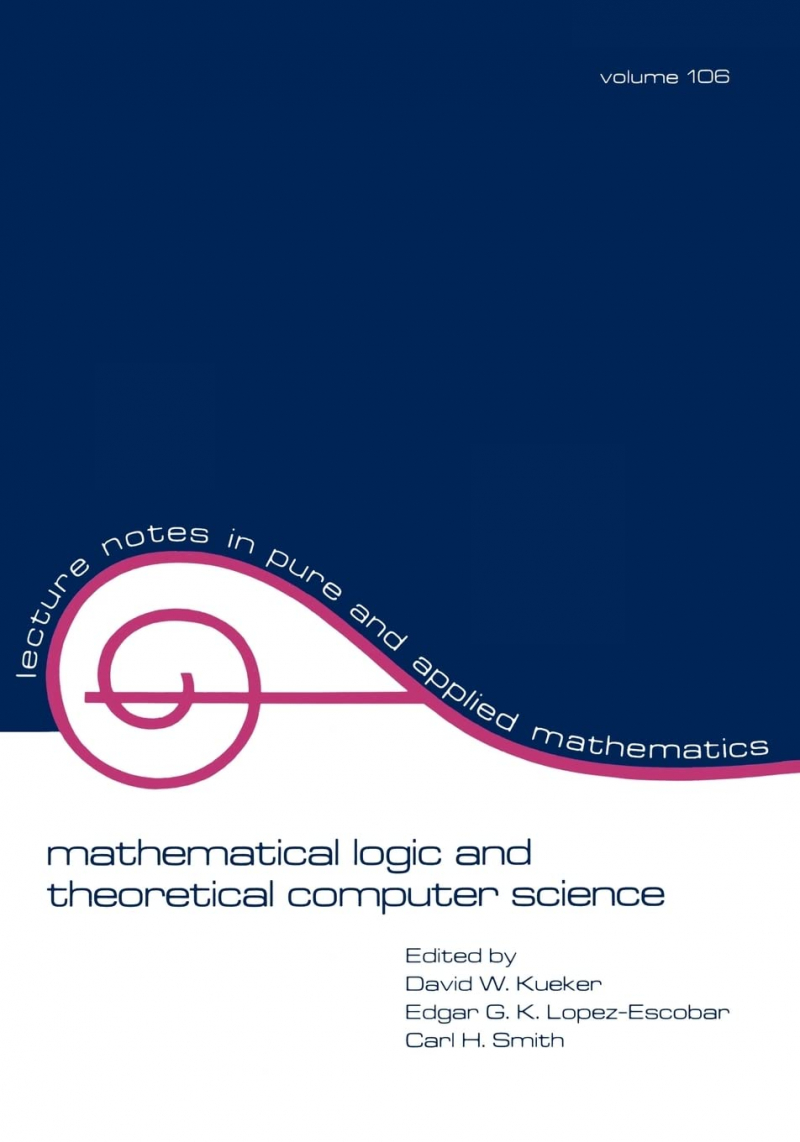
Photo: https://www.amazon.com/ 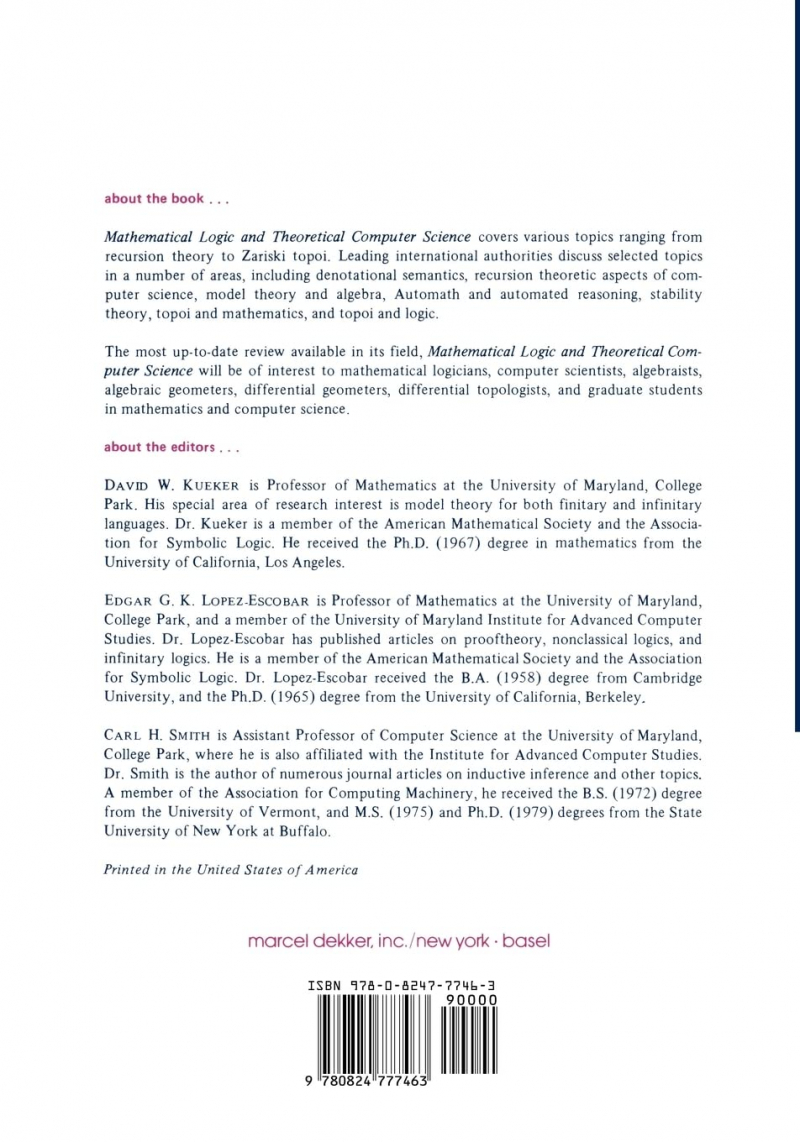
Photo: https://www.amazon.com/












